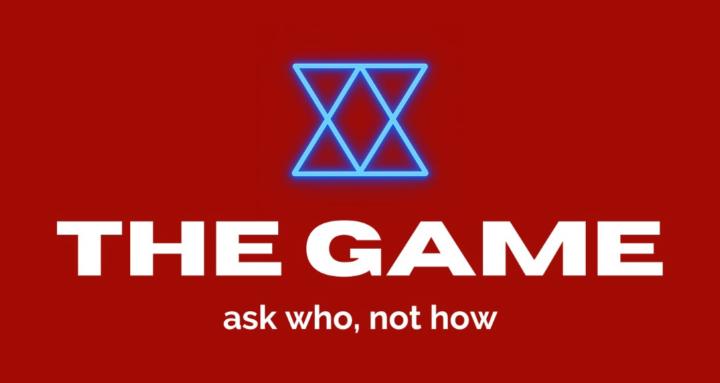Are you solo leveling on Skool?
Skool isn't a single-player game. It is a multiplayer designed so you can learn from players ahead and teach players behind. Before I joined Skool, I tried to copy players like Ali Abdaal, Gary Vee and Alex Hormozi. But they were too far ahead, and I got overwhelmed and burned out trying to catch up. Instead of focusing on players who are 100 steps ahead of me, I started to look for the ones who were only 10 or even 3 steps ahead of me. These are the perfect people to learn from because they just did it themselves. In the video below, I go into much more depth to identify the best players to learn from. We will also cover how to help the players behind to keep this learning cycle going indefinitely. This was recorded live, so if you want to ask questions in real time, then add the next event to your calendar here: Add it to your calendar here If you are playing the game of building communities with others, who are they? Give some love to your team and let them know how important they are ❤️🔥 If you are solo leveling, introduce yourself, so we can start playing together.
Hello legends of The Game ❤️🔥
I don't think I properly introduced myself when I joined the group... You can call me Mickey - when people say Michael I don't realise they're talking to me. I'm from Yorkshire, England and am about to move to Florida. Currently going through US immigration process. I'm a Dad to my 2-year-old son Charlie who is a little legend, and a husband to my beautiful soulmate, co-creator, and wife - Emma. My jam is the psycho-spiritual realm and exploring consciousness in a variety of ways. Emma and I have a very clear and awesome life plan and you're all becoming part of its success 🙏🏼🙌🏼 I love interesting and deep conversations with deep and interesting people. I'm all in on Skool, Synthesizer, my own community, and now The Game. I've noticed some of my favourite Skoolers are in here so that says one thing... Quality. Connection. Fun. I'm here to go all in with you all. Let's fly together. 🚀 Thank you @Lukas Schmidt for the invite and for the nudge to get involved. I appreciate you mate ✊🏼🙏🏼

Which Chess Piece(s) Are You Playing As?
What if chess pieces were more than just game tokens? What if each one held secrets about human nature, psychology, and the patterns that govern our world? Consider this while you are networking. Which chess piece(s) are you playing as for this challenge? Which one are you encountering? Each chess piece represents a unique way of thinking, moving through the world, and solving problems. These aren't just game pieces—they're archetypes for different types of consciousness, each with their own personality, philosophy, and hidden potential. The Pawn: The Unlikely Hero's Journey Every pawn starts the same way—small, limited, taking one tentative step forward at a time. However, the pawn is the only piece that can completely transform its identity. A humble pawn that reaches the other side of the board can become a queen—the most powerful piece in the game. It's the ultimate underdog story, built right into the rules. The Pawn's Psychology: - Never goes backward (like time itself—always moving forward) - Gets one chance at a double-step when starting fresh (that burst of beginner's enthusiasm) - Attacks differently than it moves (peaceful until provoked) - Can capture "in passing" (seizing those fleeting opportunities) Pawns are strongest in groups, forming chains and protective structures. Alone, they're vulnerable. Together, they control the entire game. There's a profound life lesson here about collective strength and the power of patient progress. The Knight: The Creative Rule-Breaker The knight is chess's rebel—the only piece that refuses to move in straight lines. That awkward L-shaped hop might look clumsy, but it's pure genius: the knight can reach any square on the board and is the only piece that can jump over obstacles. Knights Think Differently: - They see paths others can't (literally jumping over obstacles) - Always land on a different color (constantly shifting perspective) - Create "forks" (attacking two pieces at once through creative positioning) - Thrive in cramped positions where other pieces struggle
Is there a skill you've been building a little extra this week?
I called with @Lukas Schmidt and in that call he: connected me with people that can guide me in the right direction, organized my ideas and thinking, and talked me through my current obstacles. I called with @Sam Rathling and she gave me monetization and offer ideas, encouraged me through relating her own experiences, and literally gave me full business mentorship on the spot! More on that to come... but this is a post to express my appreciation for that and share how they helped me move through confusion and doubt, because I feel like that's been one of the main obstacles for me throughout the networking and discovery calls. I'd say self-confidence, especially while speaking, is the main skill I've been honing in on this week. Now I worry much less and just commit to the best words I can come up with so that I can be forward-moving and helpful overall to whoever I'm connecting with. There are obviously lots of other qualities, listening often being the most important one, but I'd love to know if there's a particular skill/strength you've been building lately this week! 👇
What Is Your Networking Spirit Animal?
Hello everyone, so happy to be in The Game among such brilliant minds! I'm passionate about art, creativity, chocolate & connection(at a very human level). Love the online game and I'm here to stay. When it comes to networking I'm actually the Sloth, I take a while to get back to DM's and e-mails but by the time I do get back, I do it with intention and heart 🧡 HOW ABOUT YOURSELF: If your networking style was an animal, which one would you be and why (maybe drop a Gif to illustrate?)

1-30 of 148

skool.com/game
Only for Community Builders.
Network to change the world.
Ask who, not how.
Powered by










